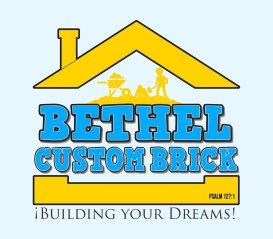Concrete is a durable material commonly used in a variety of outdoor and indoor applications, from patios and driveways to basements and foundations. However, in high-moisture areas, concrete is more susceptible to specific issues, such as cracking, spalling, mold growth, and discoloration. Preventing these problems requires a combination of good installation practices, protective measures, and regular maintenance. Here’s a guide on how to prevent common concrete issues in high-moisture environments to keep your surfaces in excellent condition.
Why Moisture Affects Concrete
Concrete is porous, which means it can absorb water over time. In high-moisture environments, excessive water can seep into concrete, leading to freeze-thaw damage, erosion, staining, and even structural weakening. Preventing these issues requires taking steps to keep water from infiltrating the concrete and protecting the surface from moisture-related damage. Here are the common issues you'll find in high-moisture areas and how to prevent them:
1. Cracking Due to Freeze-Thaw Cycles
In areas with freezing temperatures, water that seeps into concrete can freeze and expand, leading to cracks. When the water thaws, the concrete contracts, creating a cycle of damage that worsens over time.
Prevention Tips:
- Seal the Concrete: Apply a high-quality, breathable concrete sealer designed for moisture protection. A sealant forms a protective barrier that prevents water from penetrating the concrete surface.
- Control Joints: Control joints are intentional gaps in concrete that allow it to expand and contract without cracking. Placing control joints strategically helps manage natural movement in high-moisture environments.
- Prompt Crack Repair: If cracks do appear, repair them promptly to prevent water infiltration, which could lead to further damage.
3. Efflorescence (White Powdery Stains)
Efflorescence is a white, powdery substance that appears on the surface of concrete due to moisture drawing soluble salts to the surface. This can occur in high-moisture areas where water frequently comes into contact with the concrete.
Prevention Tips:
- Improve Drainage: Ensure that water is directed away from the concrete by using proper landscaping, gutters, and downspouts. Reducing the amount of water that comes into contact with the concrete minimizes efflorescence.
- Apply a Vapor Barrier: Installing a vapor barrier under concrete slabs in high-moisture areas like basements prevents groundwater from reaching the surface and causing efflorescence.
- Use a Sealant: A high-quality concrete sealant helps prevent moisture from penetrating the surface, reducing the formation of efflorescence.
4. Mold and Mildew Growth
In consistently damp areas, concrete can develop mold and mildew, leading to discoloration, unpleasant odors, and potentially hazardous air quality.
Prevention Tips:
- Increase Airflow: For indoor areas like basements, improve ventilation by using fans or dehumidifiers to reduce moisture in the air. This helps keep the concrete dry and prevents mold growth.
- Apply Mold-Resistant Coatings: Mold-resistant concrete sealers create a barrier against mold spores and prevent them from settling on the surface. This is especially useful for high-moisture areas.
- Regular Cleaning: Clean the concrete surface regularly to remove any organic material, such as leaves or dirt, which can foster mold growth in outdoor areas.
5. Discoloration and Staining
High moisture levels can cause discoloration and staining on concrete surfaces, especially if water carries minerals or other contaminants.
Prevention Tips:
- Seal with a Stain-Resistant Coating: A sealant specifically designed to resist staining prevents contaminants from penetrating the surface and causing discoloration.
- Regular Maintenance: Cleaning the surface regularly, especially after heavy rains, helps remove contaminants that could cause staining.
- Use Pavers or Mats: In areas that frequently come into contact with water, such as around pools or fountains, consider placing pavers or rubber mats to protect the concrete surface from direct moisture.
General Maintenance Tips for Concrete in High-Moisture Areas
- 1. Inspect Regularly for Signs of Damage: Regularly inspect your concrete surfaces for signs of moisture-related damage, such as cracks, spalling, or discoloration. Catching issues early allows you to address them before they become significant problems.
- 2. Apply Sealant Every Few Years: Reapply a moisture-resistant sealant every two to three years, or as recommended by the manufacturer, to maintain protection. Areas with constant exposure to moisture may benefit from more frequent applications.
- 3. Manage Landscaping Around Concrete Surfaces: Keep landscaping, plants, and soil graded away from concrete surfaces to prevent water from pooling around the concrete. Trim plants and trees near the concrete to reduce moisture accumulation from shade and fallen leaves.
- 4. Ensure Proper Drainage: Proper drainage is essential for concrete in high-moisture areas. Install gutters, downspouts, and drainage channels to direct water away from the concrete. This reduces the amount of water exposure, which helps preserve the concrete’s integrity.
- 5. Use Quality Materials for Repairs: When repairs are needed, choose high-quality repair materials designed for high-moisture environments. Using the right materials ensures that repairs hold up over time and continue to protect the surface.
Why Proper Maintenance is Essential in High-Moisture Areas
Concrete surfaces in high-moisture areas require extra care to remain durable and aesthetically pleasing. Proactively protecting your concrete with sealants, drainage solutions, and regular cleaning helps prevent costly repairs and extends the life of the surface. Taking these steps reduces the impact of moisture-related issues, preserving both the appearance and structural integrity of your concrete.
Bethel Custom Brick – Concrete Maintenance and Repair Experts in the Detroit Metro Area
At Bethel Custom Brick, we specialize in maintaining and repairing concrete surfaces in high-moisture environments throughout the Detroit Metro area. From applying protective sealants to repairing cracks and enhancing drainage, our expert team provides eco-friendly solutions to help your concrete withstand the challenges of moisture. Contact us today to learn more about our services and how we can help extend the life of your concrete surfaces.


